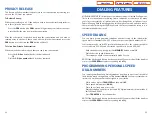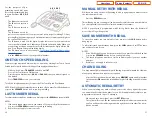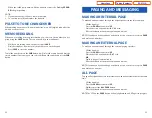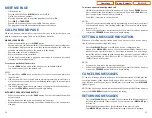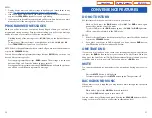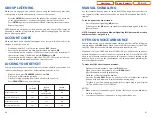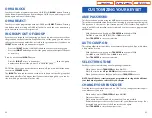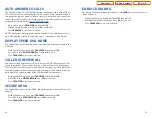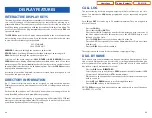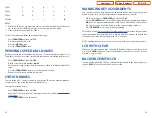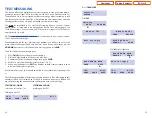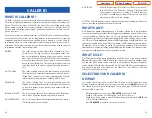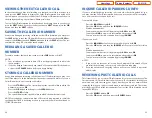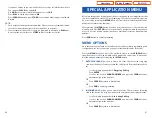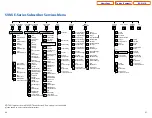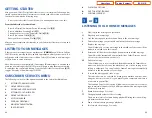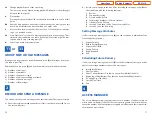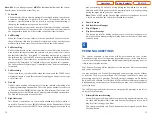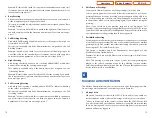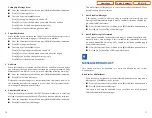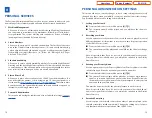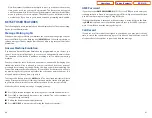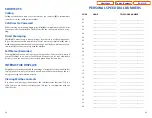
NO CID DSP
Caller ID Digital Signal Processors (CIDDSP’s) are resources
in the OfficeServ 100, OfficeServ 500, and OfficeServ 7000
Series systems required for receiving CID data. If there are
no CIDDSP’s available at the time a call comes in, this is the
message you will see on your display.
NOTE:The Caller ID features require optional software and/or hardware. Please see
your service and installation company for details.
WHAT IS ANI?
ANI (Automatic Number Identification) is a feature offered by some telephone
service providers that provides the calling party’s telephone number. This service
is only available on E&M Tie Lines on a T1, digital trunk. ANI is similar to Caller
Identification (CID) but the format and information of the calling person is differ-
ent. CID uses FSK signalling and ANI uses DTMF signalling. Usually, with ANI, a call-
ing party’s identity is the Listed Directory Number (LDN) unless a separate bill-to-
number has been specified, (in which case the bill-to-number will be sent). Note
that ANI does not provide calling party NAME, only the number.The phone system
can provide calling number to name translation table.
WHAT IS CLI?
On ISDN circuits, calling party information is called CLI and is supported on both
BRI and PRI type circuits. On BRI circuits the system only supports number deliv-
ery and, like ANI, a name can be attached to the telephone number of frequent
callers via the Caller ID translation table. On 5ESS and NI2 PRI circuits both name
and number support is provided on the OfficeServ 100, OfficeServ 500, and
OfficeServ 7000 Series systems.
SELECTING YOUR CALLER ID
DISPLAY
You can decide if you want to see the Caller ID name or Caller ID number in the
display. Regardless of which one is selected, you can press the
NND
button to view
the other pieces of Caller ID information. To select the type of Caller ID informa-
tion you wish to view first:
•
With the handset on-hook, press
TRANSFER
and then dial
119
.
•
Dial
0
for CID options,
1
for ANI options, or
2
for CLI options.
•
Dial
0
if you do not wish to view CID information,
1
to view the NUMBER first
or
2
to view the NAME first.
•
Press
TRANSFER
to exit and store your selection.
57
56
CALLER ID
WHAT IS CALLER ID?
Caller ID is the name given to the telephone company-provided feature that de-
livers the telephone number and sometimes the name of the person calling your
phone. There are two types of Caller ID; the first delivers the calling party’s tele-
phone number only and the second (sometimes referred to as “Deluxe” Caller ID)
delivers both the calling party’s telephone number and name as listed in the tele-
phone directory.
The phone system can handle both types of Caller ID; in fact, in the case of num-
ber only delivery, the system can be programmed to insert a name for a specific
telephone number. However, even though you are paying to receive Caller ID
information, there are some circumstances that mean you will not receive this in-
formation. The six most common reasons are listed below along with the display
information that the system will provide.
PRIVATE
The caller does not wish his/her name or number to be re-
vealed to you. This type of call can be stopped at the tele-
phone company by dialing an access code on your outside
lines. This will redirect these PRIVATE calls to an announce-
ment that states that you do not wish to receive calls that
have had Caller ID blocked.The code to block these calls can
usually be found in the front section of the telephone direc-
tory.
OUT OF AREA
The caller is calling from an area that cannot provide Caller
ID information (for example, international calls) or he/she is
calling from a type of circuit that cannot provide Caller ID
information, for example, some outbound WATS lines.
PAYPHONE
The caller is calling from a coin-operated telephone. The
telephone company will send this information as there are
no directory listings for pay phones. The number will be de-
livered as usual.
INVALID CID INFO
This is a message that will be displayed when CID informa-
tion is sent on the line but was somehow corrupted.
NO CID RECEIVED
This is a message that will be displayed when there was no
CID information sent on the line.
Table of Contents
ITP-5121D
Home Page

